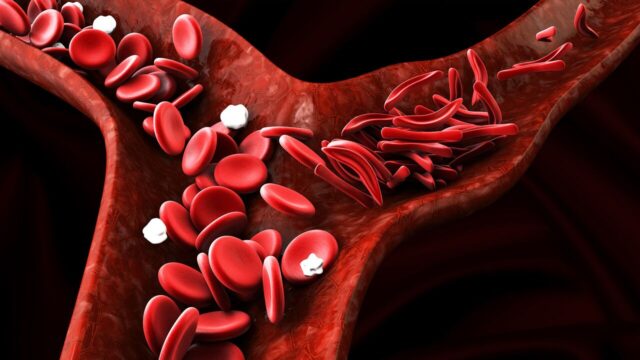October 1st, 2024
PRESS RELEASE
Dr Sota Omoigui MD
Division of Inflammation and Pain Medicine
L.A. Pain Clinic
4019 W. Rosecrans Ave, Hawthorne, CA 90250
Email: Medicinechief@aol.com
Website: www.medicinehouse.com
This year 2024, in a great setback, two of the most promising treatments for sickle cell anemia (Adakveo and Oxbryta) have been withdrawn due to lack of efficacy in stopping pain crisis.
I am reaching out to share a groundbreaking development in the field of sickle cell disease treatment that promises to transform patient outcomes.
On July 4th, 2024, Dr. Sota Omoigui a Recipient of the US FDA Advisory Committee Service Award, has discovered and unveiled the first new intervention in 100 years that is 90% effective in preventing and aborting a sickle cell crisis within the golden half hour.
This innovative treatment will significantly reduce pain, suffering, emergency care and hospitalizations associated with sickle cell crises. The dreaded feature of the disease is the sickle cell crisis. Developing a medication to prevent and stop a sickle cell crisis within the golden half hour has defeated the best medical scientists, the best and most resourced pharmaceutical companies and the best researchers worldwide. Pfizer just withdrew its $5.4 billion drug Oxbryta from the market as the patients on Oxbryta had more sickle cell crisis than those on placebo (https://www.reuters.com/business/healthcare-pharmaceuticals/pfizer-withdraws-sickle-cell-disease-treatment-all-markets-2024-09-25/ ) The Novartis $665 million drug, Crizanlizumab-tmca (Adakveo) was approved by the FDA in November 2019 for reduction in frequency of sickle cell crises. In May 2023, The European Medicines Agency’s (EMA’s) Committee for Medicinal Products for Human Use (CHMP) revoked Novartis’ approval for Adakveo[1] because Adakveo couldn’t reduce the number of painful crises (https://www.fiercepharma.com/pharma/eu-regulators-recommend-yank-authorization-novartis-sickle-cell-med-adakveo-after-phase-3 ).
Dr Sota Omoigui, a pioneering researcher, utilized the same approach that led to his inflammatory theory of pain that is cited by hundreds of researchers worldwide. He carefully analyzed the research literature and clinical trials from the discovery of sickle cell in 1910 to date. By identifying the various jigsaw pieces of research, he put the pieces together to discover the first solution to this dreaded complication in 100 years. The total economic burden of inpatient care for individuals with SCD in the United States was $811 million in 2016 alone[2] (https://www.ncbi.nlm.nih.gov/pmc/articles/PMC9898623/ )
This intervention discovered by Dr Sota Omoigui, is affordable at a cost of $10.00 a month for the lowest price oxygen concentrator, accessible and will instantaneously improve the quality of life for 20 million lives worldwide, both in advanced countries and in the Global South, It will reduce pain, suffering, emergency care, hospitalization, complications, disability and mortality rates linked to this chronic condition. It will lower healthcare costs by hundreds of millions of dollars
Key Highlights:
Sickle cell disease was first described by Herrick in 1910[3] (https://www.scirp.org/reference/referencespapers?referenceid=590342 ) when he observed a dental student who presented with pulmonary symptoms. He further described the “peculiar sickle-cell shape” of the red blood cells of the patient.
- In 1927, Hahn and Gillespie[4] suggested that hypoxia (low oxygen) caused the sickling of red blood cells.
- In a low oxygen environment the sickle hemoglobin undergoes formation of a sticky gel, a process that is known as polymerization. With polymerization, the sickle hemoglobin cells become more rigid and change their shape to a sickle shape. The red blood cells are trapped and easily destroyed during their passage through the blood vessels and capillaries resulting in anemia and blood vessel occlusion in almost every organ, with interruption of the blood supply and excruciating pain.
In 1930, Scriver and Waugh in Canada reported, a case of sickle-cell anemia, wherein the number of sickle cells in the blood may be varied by the change of the oxygen (O2) pressure; that this is a reversible reaction; and that sickling takes place when the O2 pressure falls below a pressure of 45 mm. Hg[5].
- (https://europepmc.org/
backend/ptpmcrender.fcgi? accid=PMC382053&blobtype=pdf - In 1983, Franck and Chiu[6] stated that“deoxygenated reversible sickle cells (RSCs), possess the ability to readopt their normal discoid shape upon reoxygenation (https://www.sciencedirect.
com/science/article/pii/ )S0021925820820833 - In 1991, Robert Hebbel stated[7].: “For reversibly sickled cells this destabilization is reversible, with reoxygenation allowing a return to normal“ (https://www.sciencedirect.
com/science/article/pii/ )S0006497120777840?via%3Dihub - In August 1992, a clinical trial by Zipursky et al, found that inhalation of 50% oxygen in patients who were not in crisis produced a significant fall in RSCs and a lesser fall in irreversible sickle cells (ISCs.)
- Reversible sickle cells (RSC) can become irreversible sickle cells (ISC) after repeated episodes of sickling.
- The reversible sickle cells can revert to their original flexible discoid shape when reoxygenated, but repeated sickling can damage the cell membrane and make it impossible for the cells to return to their normal shape, becoming irreversible sickle cells.
- Thus oxygen therapy in the golden half hour onset of a crisis restores reversible sickle cells and prevents them from progressing to a critical mass of irreversible sickle cells, wherein the sickle cell crisis becomes established and intractable.
- What this means is that if we can reverse the low oxygen environment, by providing home inhalation oxygen prior to sleep or within the first golden half hour of a sickle cell crisis, we can stop the crisis. The efficacy among our patients has been 90% for prevention and stopping a crisis in the golden half hour. And when you stop the crisis, you prevent the severe pain, emergency care, hospitalization and multi organ damage.
- And we have seen this work in every sickle cell patient that we have treated in our practice, as long as there are no other triggers involved such as cold and infection.
How was this solution missed?
· This is because by the time these patients seek medical care or arrive in the hospital, they are already experiencing irreversible sickling which can no longer be reversed by oxygenation. The time dependent golden half hour intervention for a sickle cell crisis, which can damage multiple organs is similar to that of the golden hour for stroke when there is the best chance of restoring blood flow and saving brain tissue or that for myocardial infarction wherein timely intervention impacts a patient’s survival and quality of life following a heart attack.
In Summary
Dr. Sota Omoigui’s discovery not only represents a major scientific advancement but also a beacon of hope for millions of individuals living with sickle cell disease.
I believe this story will resonate deeply with your audience, shedding light on an often-overlooked condition while highlighting a monumental step forward in medical treatment.
We would be happy to arrange an interview, presentation and/or lecture with Dr. Sota Omoigui or provide additional information about the research and its implications. Thank you for considering this impactful story.
Link to Full Article with Scientific References and Patient Testimonials







